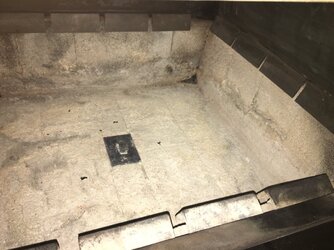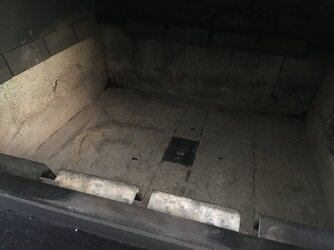My oh my. Cleaned out both stoves and swept the chimneys. This year was 100% shed cured Douglas fir on a relatively old cat and the chimney was pretty clean. Thinking the use of the new mini split helped avoid some of those extra long and low burns that tend to build up chimney deposits.
I only had to clean ash twice this year. At the ash line most of my bricks are broken and the bottom bricks have eroded significantly. I counted 24 new bricks to get it all but will double check. TSC doesn’t stock firebricks until November! I definitely do not recommend the soft pumice bricks. The standard hard bricks in the barn stove look like new.
This stove was installed 11 years ago and sees 4-5 full cords per season running 95% low and slow.


I only had to clean ash twice this year. At the ash line most of my bricks are broken and the bottom bricks have eroded significantly. I counted 24 new bricks to get it all but will double check. TSC doesn’t stock firebricks until November! I definitely do not recommend the soft pumice bricks. The standard hard bricks in the barn stove look like new.
This stove was installed 11 years ago and sees 4-5 full cords per season running 95% low and slow.




